It seems that Apple has removed its Pro App flagship from the ‘Professional’ tag. Since the beginning of the year, Apple has not released any update of FCP (Final Cut Pro). On the other side of the NLE map, Premiere Pro and DaVinci Resolve are deep into the race, as FCP remains on the starting line. Hence, Apple’s Final Cut Pro has reached its glass ceiling. An OpEd.

Final Cut Pro: Not ‘Pro’ anymore
What is happening to one of Apple’s most sophisticated and professional apps — Final Cut Pro? This desktop app has been one of Apple’s Pro App flagships. Final Cut Pro (FCP) had a glowing future back then, in the days of version 7. Since Apple made the ‘jump’ from 7 to 10 (FCP 7 to FCP X), its NLE consensus is linearly fading. Is it intentional? Well, by reading Apple’s definition of FCP, it might. That’s how Apple defines FCP: “Final Cut Pro combines revolutionary video editing with a powerful media organization and incredible performance to let you create at the speed of thought”. The keywords are ‘Speed’, and ‘Performance’. Indeed, FCP is fast… very fast NLE. I mean —it’s the fastest NLE around (more than Premiere Pro, Resolve, and Avid). Obviously, you need the OS platform in order to make it run. However, in the Apple Silicon ecosystem, FCP is blazing fast. Nevertheless, professionals choose to edit on the ‘others’. Why? And the more important question: Does Apple care?
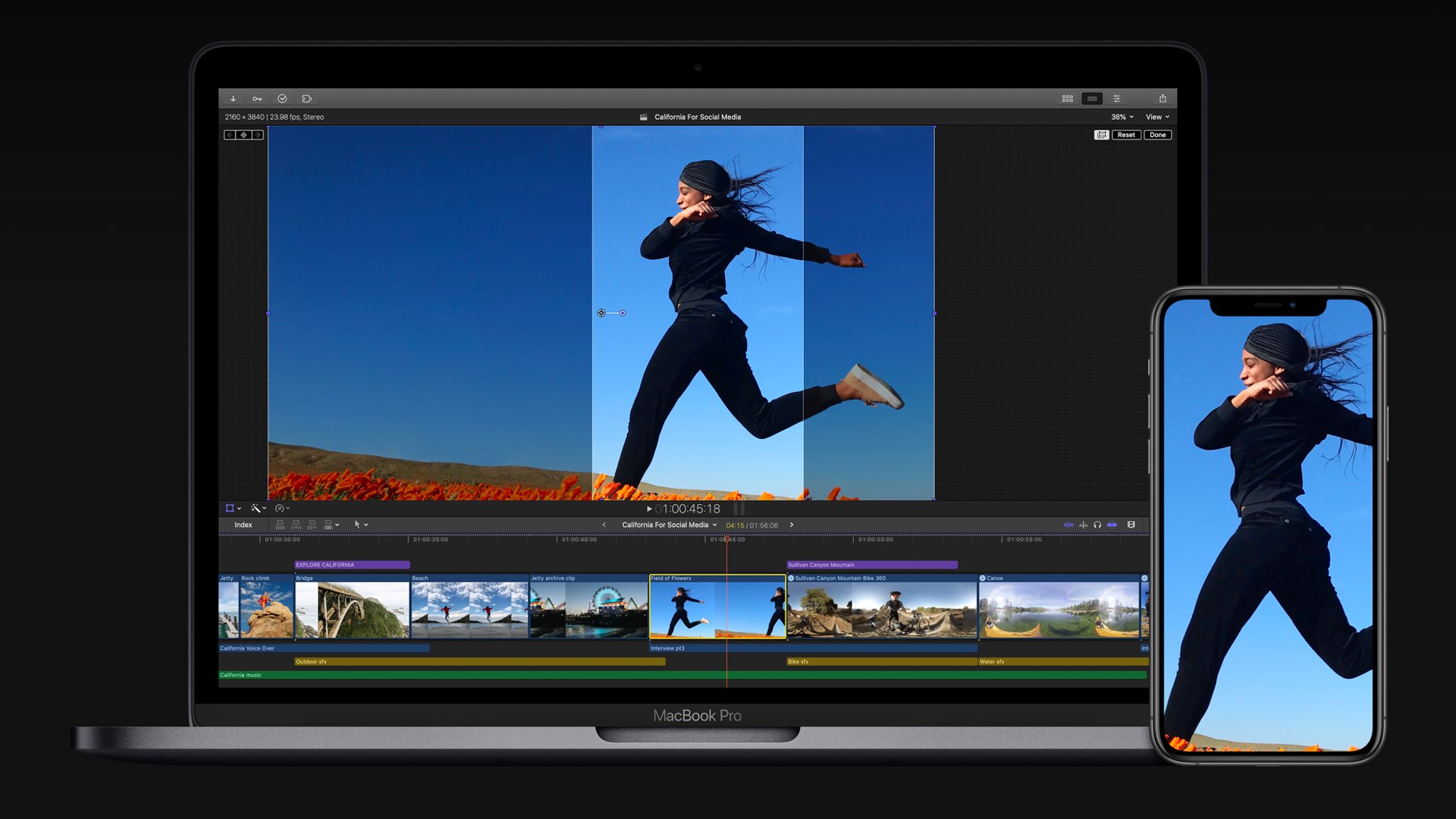
If we take the Oscars 2023 for example, then we can reveal that there’s almost not even one film that was edited on FCP. Most of those films were edited on Avid Media Composer, and furthermore, even Premiere Pro has managed to penetrate into the post-production phase of these films.
NLE software demands vast R&D
If we analyze the amount of FCP updates released by Apple, we can see a significant reduction in the last few years. For instance, explore the graph below that shows FCP updates per year (2017-2023). There was a solid jump in 2018, but since then we can definitely notice a reduction. Moreover, no update has been released yet this year. On the contrary, Blackmagic Design and Adobe are constantly updating their NLE (DaVinci Resolve and Premiere Pro) almost every month on the clock. Explore the graph titled ‘Major NLEs software updates in 2022’ to reveal that FCP and Avid are barely updating their NLE. As for Avid, it is like a tractor. Avid Media Composer is very trustable among veteran top-notch editors. Hence, this complicated software has a solid base and thick roots in the post-production houses. Thus, it’s heavy software with a lot of confidence. However, FCP has no grip on those professional editing suites, and it seems that Apple is doing zero effort to establish this or to convince professional editors to use FCP in high-end productions.
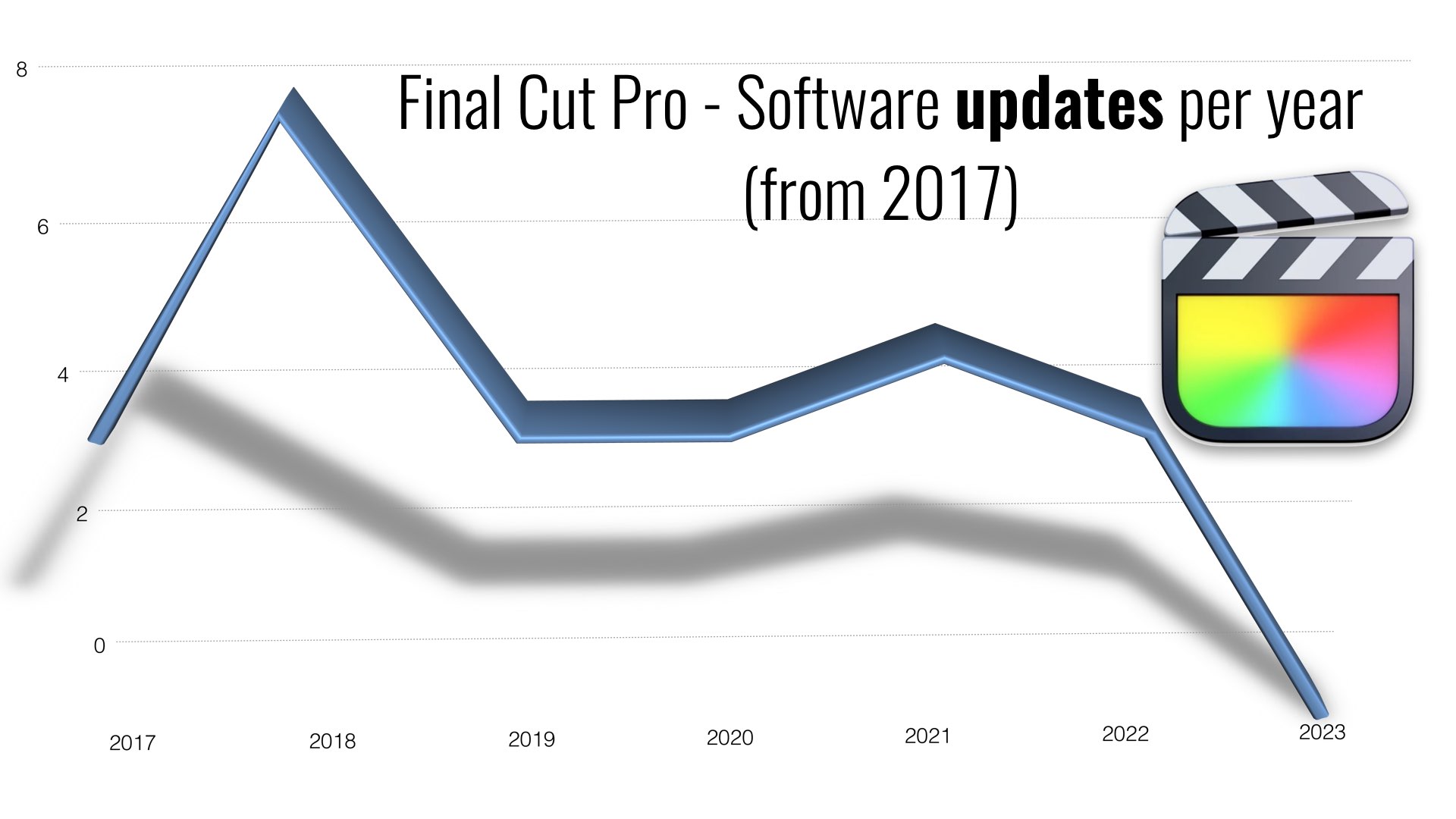
If we analyze the amount of FCP updates released by Apple, we can see a significant reduction in the last few years. There was a solid jump in 2018, but since then we can definitely notice a reduction. Moreover, no update has been released yet this year.
Not utilized by high-end productions
If we take the Oscars 2023 for example, then we can reveal that there’s almost not even one film that was edited on FCP. Most of those films were edited on Avid Media Composer, and furthermore, even Premiere Pro has managed to penetrate into the post-production phase of these films. Yes, I know it sounds strange— The super buggy program was recently utilized by high-end productions. Premiere Pro was chosen over FCP. It must be noted that the product guys of Premiere Pro have been busting their asses in order to sharpen the software. In fact, every month, Adobe released an update to Premiere Pro. As for NLE – every NLE, there are always a lot of updates. Editors’ feedback is pushed to product managers, which, in turn, push back their features, upgrades, and updates. DaVinci Resolve is another good example of that. A reborn multi-complex NLE, that is being involved on the go, with new features developed every month, on the clock. Apple doesn’t do that. And that’s another indication that Apple sees its FCP as iMovie on steroids and not more than that.
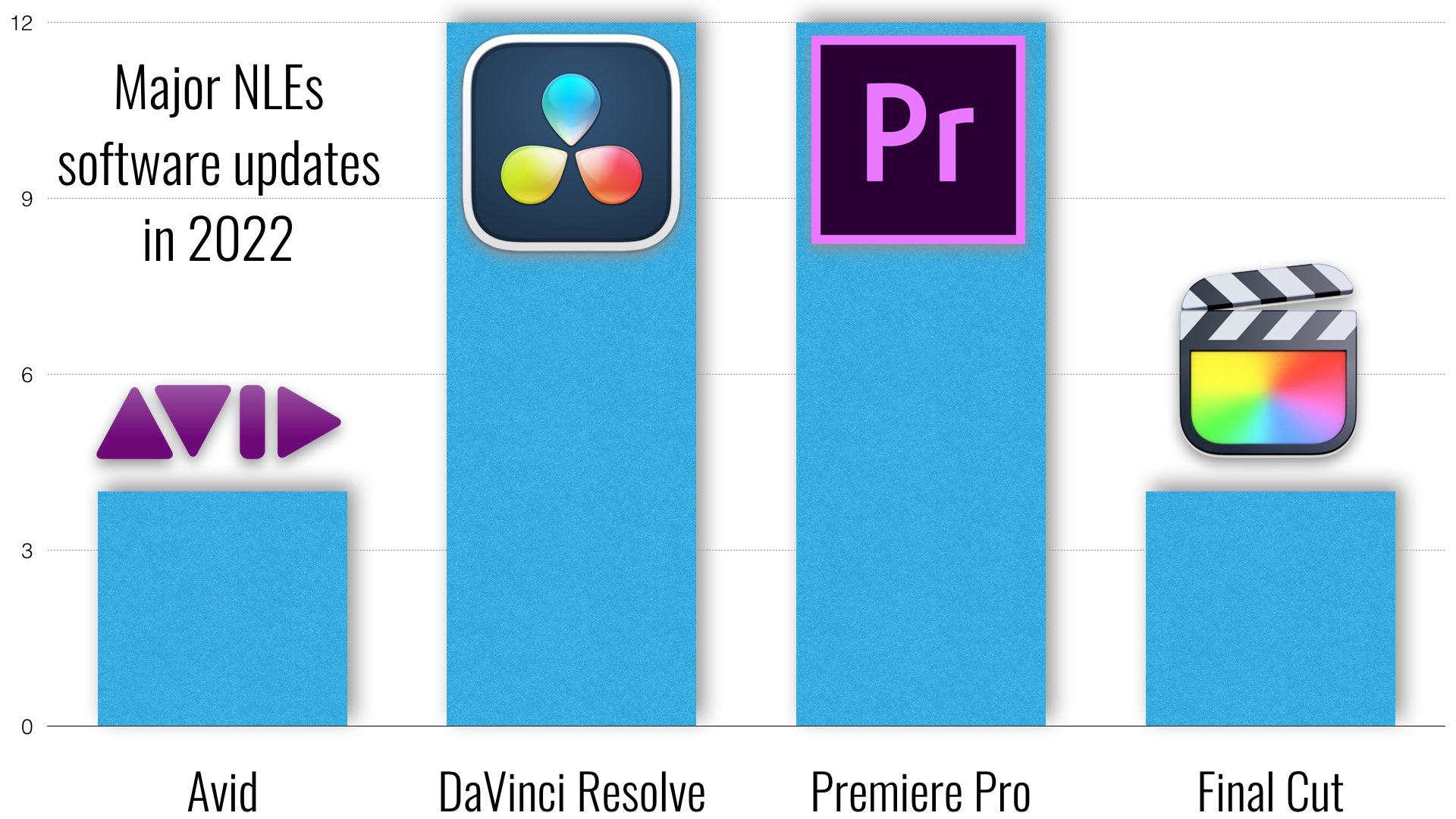
Since then, the FCP update frequency decreased even more, and the competitors got even stronger (DaVinci and Premiere).
A short history
A major shift in the product (7 to X)
Generally speaking, FCP was born in 1998. In its golden age, FCP made up 49% of the United States professional editing market, with Avid at 22%. After the release of Final Cut Pro, Adobe Premiere maintained a strong market share on Windows but began to decline on Mac as its older codebase was more difficult to maintain. The first fully broadcast quality, a globally distributed TV show produced using Final Cut Pro was Women of Wrestling in 2000. Moreover, in 2003, Apple launched a trade-in program that allowed Premiere users to exchange their discs for a free copy of Final Cut Express or receive a $500 discount on Final Cut Pro. On July 23, 2009, the mighty Final Cut Pro 7 was released. Indeed, that was the golden age of Apple’s NLE. About 50 Hollywood films were edited on FCP 7. For instance: 300 (2007), The Simpsons Movie (2007), and X-men Origins: Wolverine (2009). Moreover, FCP 7 was used to cut the 2020 Oscars winner, Parasite. Editor Jinmo Yang said: “Despite FCP 7’s age, it was more than capable of handling ProRes HD proxies of the Alexa 65 masters, with After Effects alongside for timing and pre-visualization of the numerous invisible VFX shots”. However, Apple killed its own success by releasing FCP X in 2011. Final Cut Pro X was fully-rewritten in 64-bit, with a new interface, workflow enhancements, and improved automation. The reaction was extremely mixed, with veteran film editors refusing to use it, due to a lack of features compared to Final Cut Pro 7. An online petition was created, asking Apple to continue development of Final Cut Pro 7 or to sell it to a third-party gathered 1,600 signatures within a week.
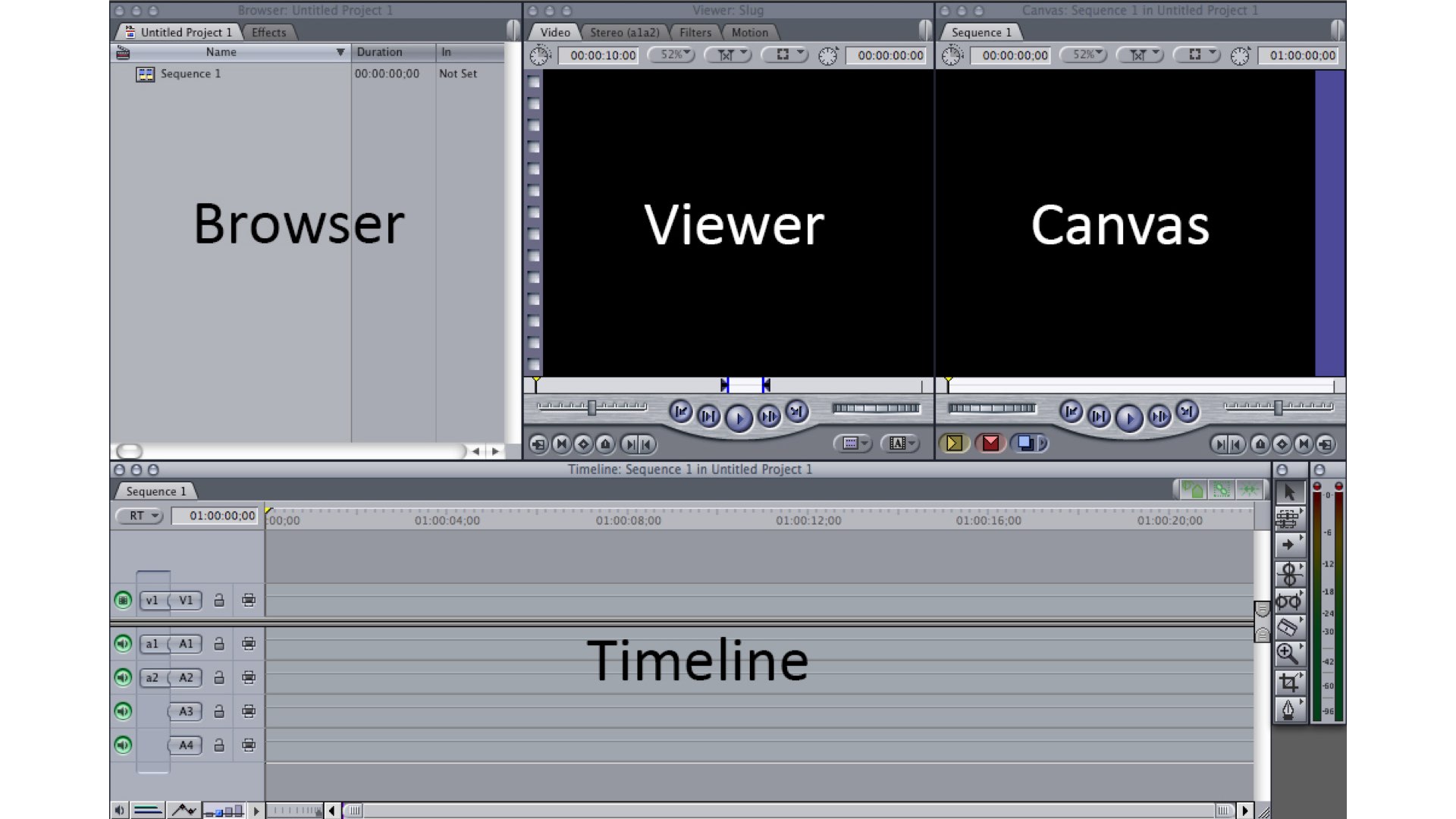
On July 23, 2009, the mighty Final Cut Pro 7 was released. Indeed, that was the golden age of Apple’s NLE. About 50 Hollywood films were edited on FCP 7.
Second petition from professionals
In April 2022, 100 people in TV and film production worldwide sent an open letter to Tim Cook of Apple about Final Cut Pro. Just a reminder, here’s a quote: “We are excited by Final Cut Pro. We think that it is the biggest leap forward in editing technology since the move to digital. We think it’s incredible. Final Cut Pro is a wonderful application used by many YouTubers, education, and small business content creators worldwide. We know why it is successful. It is liberating, efficient, and fun to work with. But, unfortunately in professional film and TV, editors who use Final Cut Pro are a tiny minority. We’d love to see Apple publicly support and certify the suppliers of the third-party products and services we use to integrate Final Cut Pro into industry-standard workflows. We welcome your forthcoming brand-new FCP Certification exams. We also hope to see Apple ensuring that improved Pro Apps support is widely available and that Final Cut Pro can also be bought through current industry suppliers. This is essential for big productions to accept Final Cut Pro as legitimate. If Apple renewed its public commitment to the professional filmmaking industry and its visionary product, we believe an increasing number of editors would discover the joys of using Final Cut Pro”. However, Apple’s response was dull and superficial, as it promised to launch a new “Apple-authorized certifications for pro video”, establishing a panel of industry experts for regular consultations (which we haven’t heard about) and “Expanding the content and frequency of Final Cut Pro workshops for major film and television productions”. Since then, the FCP update frequency decreased even more, and the competitors got even stronger (DaVinci and Premiere).
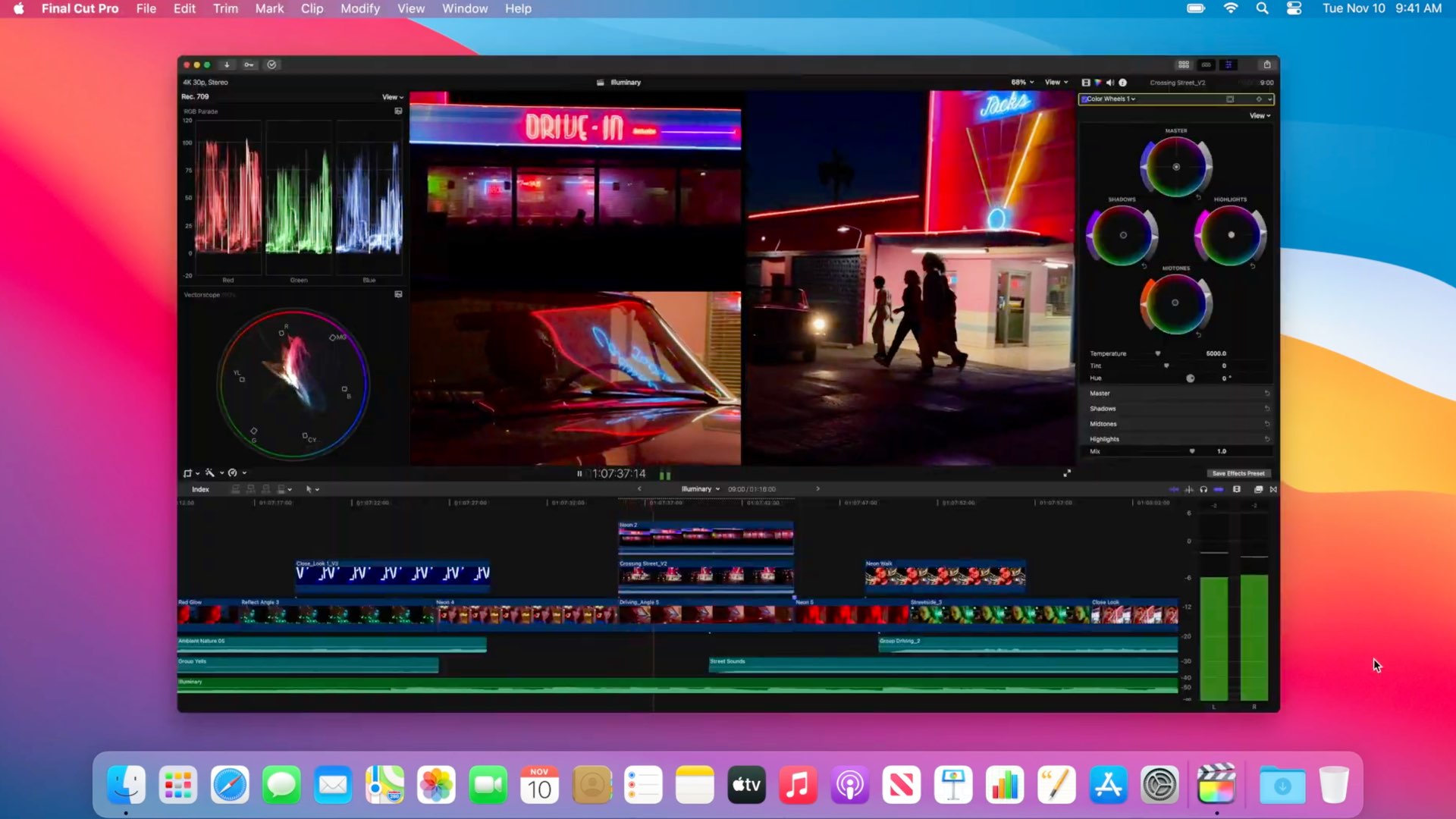
FCP has no grip on those professional editing suites, and it seems that Apple is doing zero effort to establish this or to convince professional editors to use FCP in high-end productions.
DaVinci and Premiere
Let’s talk a bit about the two main FCP competitors — DaVinci Resolve (DR) and Premiere Pro (PP). First, PP is being constantly evolving by releasing monthly updates, backed by private beta testers. Adobe has built a community that works alongside PP product managers. That ecosystem works well, in fact, it reminds a product development lifecycle with a defined roadmap. Hence, the NLE is getting dramatically improved and backed up by the professional community. As for DR, the story is well known. DaVinci has turned into a post-production monster, offering almost all post-production disciplines (Editing, Color grading, Sound design, and even VFX). Like Adobe, Blackmagic also pushes new features to users on a monthly basis. And Apple? Apple is sleeping.
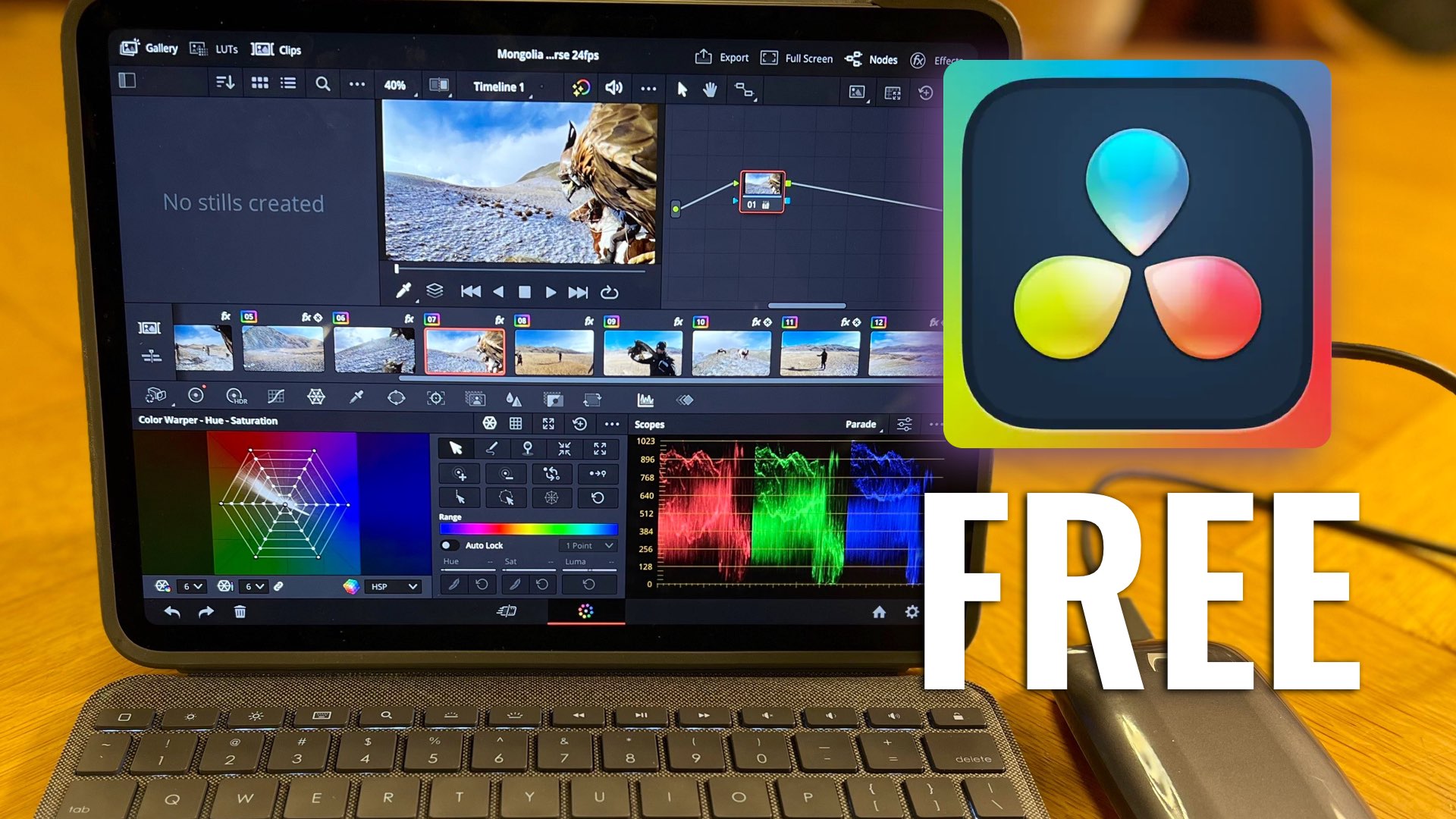
DaVinci has turned into a post-production monster, offering almost all post-production disciplines (Editing, Color grading, Sound design, and even VFX). Like Adobe, Blackmagic also pushes new features to users on a monthly basis. And Apple? Apple is sleeping.
So what’s next?
I know some of you will ask: Why should stable software need to get updated every month or so? There’s a simple answer for that: That’s because it’s part of a normal and healthy product management methodology. Ultra-complicated software like a ‘professional’ NLE, must be constantly developed with added features and updates pushed to users. That’s how it works. As a personal note —I have been using FCP for more than 16 years. I love it. It’s the fastest and the most intuitive NLE on the market. However, last year I’ve decided to switch over to DR. Final Cut Pro is great software, and with tons of potential. I’d love to explore Academy Awards projects cut on it. However, it seems that the FCP market belongs to YouTubers, hobbyists, and advanced content creators, rather than professional editors. For those who want to be professional editors, I’d recommend getting into DR, or PP (I can’t believe I just recommended PP). BTW, one of the best ways to get into editing is via the DR iPad app. It’s far from being perfect, but it constitutes a soft landing before getting into the mighty desktop app. Try it, you will not regret it. And for FCP? Let’s hope it will get boosted, just like PP and DR. And let’s hope that Apple still has big plans for its NLE.
Support Y.M.Cinema Magazine by purchasing our one-of-a-kind stainless steel model of 65 motion picture film camera – A perfect gift for filmmakers.

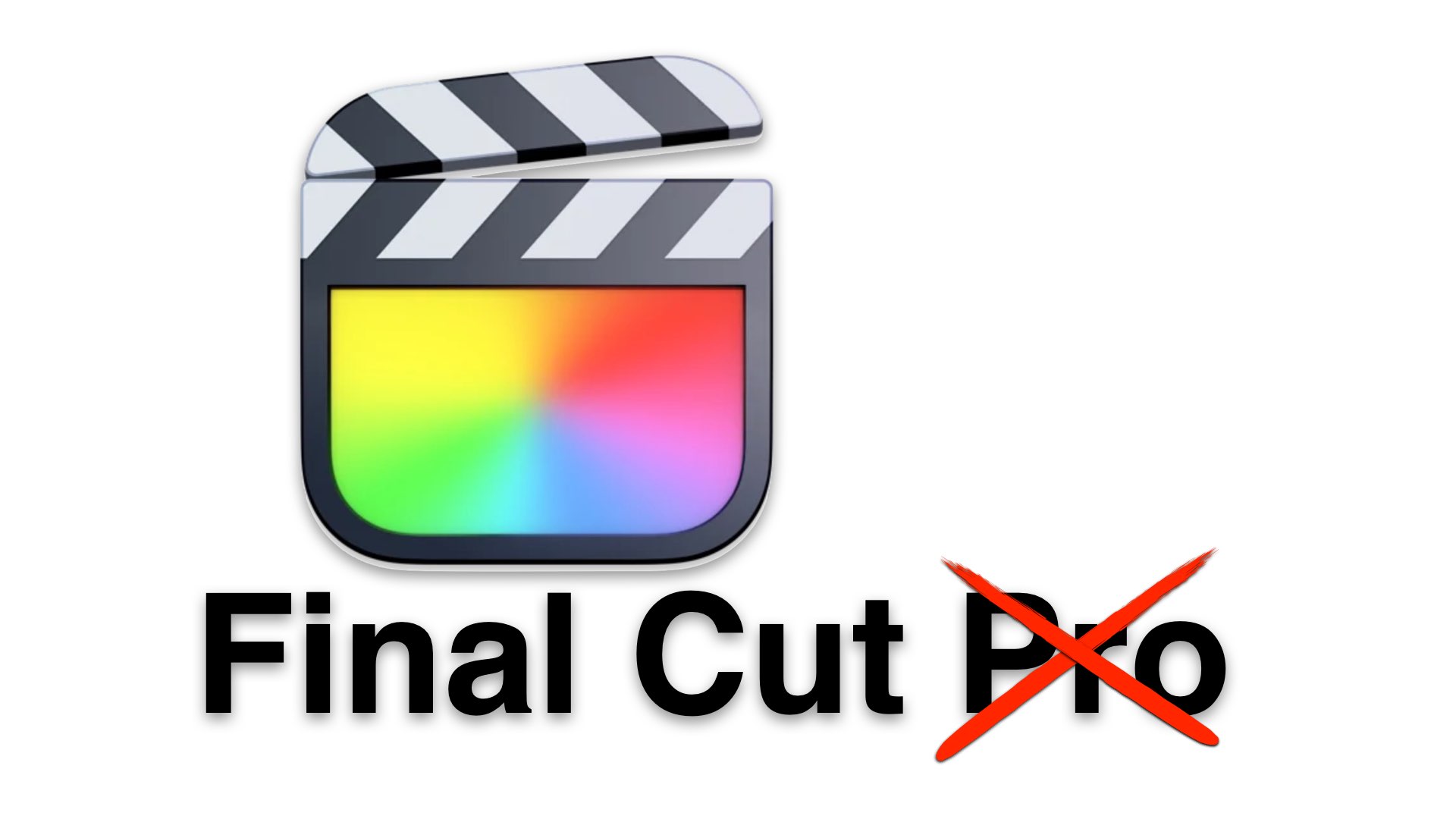
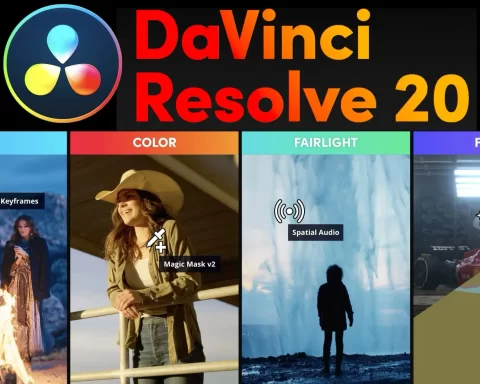
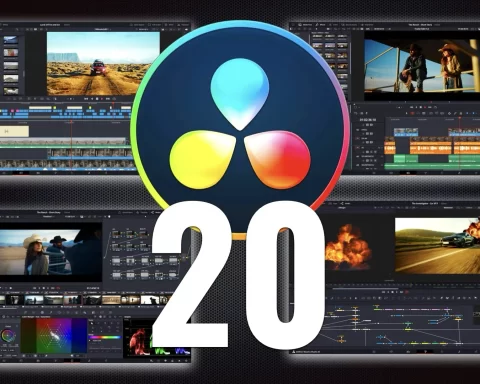
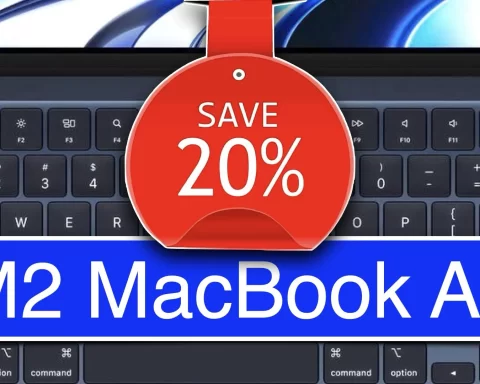
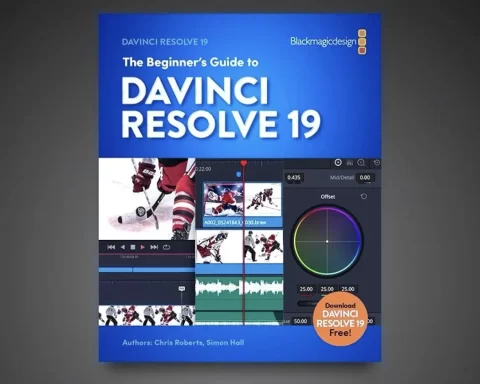
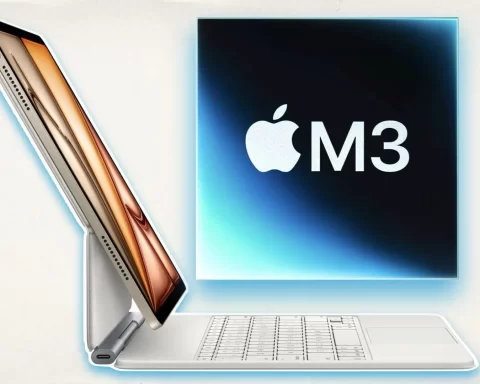


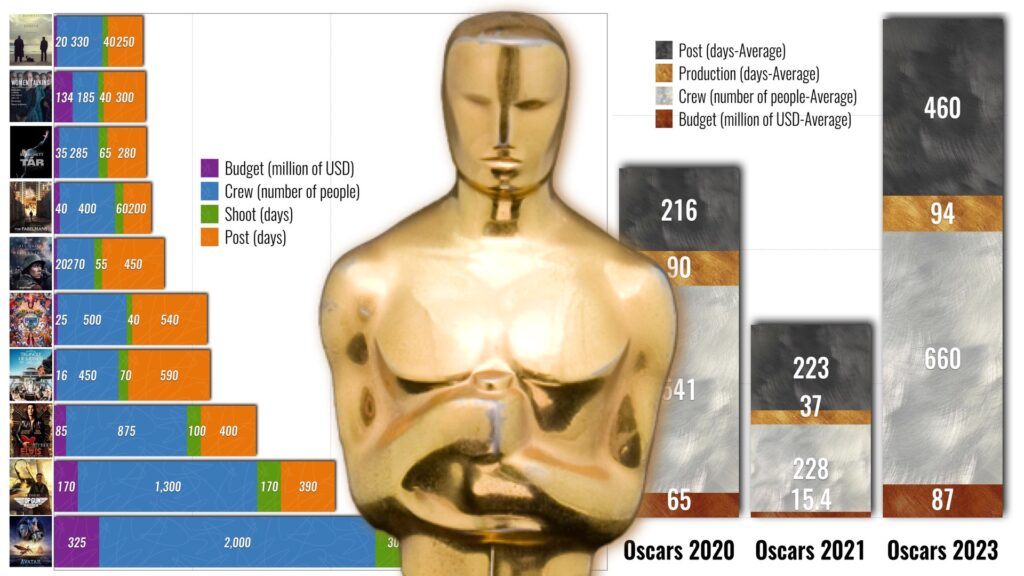




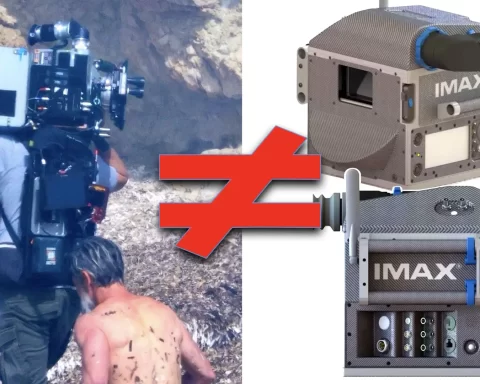


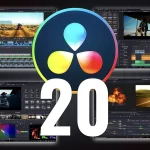
Wow… yet another clueless take on FCP with nothing more than the usual sad and dated dog whistles and logical fallacies. Measuring an NLE’s “professionalism” by the NUMBER OF UPDATES?? 😂🤣… what a lump of hogwash. With the usual, mindless “nobody uses it” nonsense, ignoring that there are FAR more FC >10 users than there EVER were for 7 or below.
Oh, right, but none of them win Academy Awards! Unlike the Hollywood SUB ONE PERCENT of the industry, which is nothing if not notorious for being utter Luddites, afraid of anything new or the slightest change. You know, that thing that NO ONE cares about any more other than the ones winning them? Geez. Silly me. How could I forget that that is the most relevant and ONLY yardstick for anything in the industry being “pro”?
And funny how you don’t even actually name so much as ONE thing every “pro” is missing in FC that they can’t do without and have everywhere else, hm? Yeah. Just pandering to the arrogant, solipsistic “Me be way mo betta super-pro than you… because of MY NLE!” crowd.
As if those “Youtubers” who are apparently beneath you and your high and mighty pro-ness didn’t, in fact, earn MULTIPLES of what you do. That on the other hand is obviously irrelevant to anything “pro”. You are what your NLE is!
And maybe get off your high horse long enough and buy a dictionary sometime?
“professional
/prəˈfɛʃən(ə)l/
adjective: a person engaged in a specified activity as a main paid occupation rather than as a pastime.”
Right. But somehow neither my software nor I are “professional” because YOU, “The Academy” and some update cycle say so. Got it.
Ouch. 🤦🏼♂️
Wow, you sure took this article personally.
I believe Apple failed to realize the importance of collaboration and cloud storage whereas both Adobe
And Blackmagic embraced the collaboration and cloud
Concept thru listening to community needs.
A huge marketing blunder on Apples part which
Will only enhance market share for both Adobe and Blackmagic.
On the flip side, maybe something is in the works
That remains top secret until the launch?
Right. Since such a VAST majority of editors in the market need extensive collaboration features far beyond what is already possible with FCP let alone 3rd party tools if needed, right?
🙄
Well, of course they do.
Good grief, are you working for Tim directly? Why so bitter because someone disagrees with your take on FCPX. I love it too but I’m not crying and peeing my panties over this article.
No actual arguments, just random unsubstantiated conjecture, and ramblings, so just go straight for the juvenile ad hominem drivel when called on it. Bravo. What a “pro”. 👍🏼
‘Michael Caron’s’ real name is Robin Kurz with the YouTube channel, POST-PROfessionals. The guy vehemently defends Final Cut in a rude and disrespectful way, trolls fellow FCP users for their ‘stupidity’, and is an overall loser with too much time on his hands.
He’s hounded people by many aliases, but he always uses the same punctuation, all caps, emoji using, pretentious prose. It’s beyond easy to tell when it’s this jerk and it most certainly is in this case.
Don’t know if you’re right or not, but Doxxing is kinda troll behaviour, something to reflect on.
I have been editing long enough to remember the launch of Final Cut Pro X. The excitement was palpable. As soon as the new interface came on the screen, there was an audible groan from the audience. As soon as we found out the new FCP X lacked professional features that were present in Final Cut Pro 7, many people left. It was a disaster. No one knew what Apple was thinking and they clearly did not consult anyone in the “professional” industry before launching FCP X. FCP X would not even connect to an external monitor at launch. So, people kept using FC 7 or moved to PP. PP saw an opportunity and jumped on it. When PP went subscription based, Davinci was able to step into the arena.
FCP X has never really recovered from that huge mistake in the “professional” arena.
Now, this is for Michael Caron. If you are old enough to know the history of this article and were an editor when Apple made this huge mistake, you know that Apple has not catered to the professional market since. I do believe this is what this article is about. If you are not old enough to know the history, I can see why you feel this article is trash. And I agree “professional” depends on what arena you are in. PP is the “professional” standard in the indie and doc world. Davinci is the standard in the color world. Final Cut Pro X is still holding on to the content creator world, but Davinci is closing fast. AVID is the standard in the world that most people ultimately want to be.
And yes, Premiere Pro and Davinci have catered to the professional market. That is why they are making inroads into the professional market. If you go to film school or work in a post house, you learn AVID and therefore, use it.
Collaboration and Cloud based editing is absolutely crucial to professional editors and post houses. The fact that Premiere and Blackmagic are paying attention to this shows they are interested in keeping their users happy and up to date with changes in the professional industry.
No one is saying Final Cut Pro X can’t be used for professional users in its current form. It is losing market share because Apple is not actively pursuing professional users. And it is losing market share; that is not conjecture.
From reading, that is what this article is about.
On another note, stop the ads from constantly playing on the page. Makes the site unusable.
When apple did away with Final Cut 7 and replaced it with FCPX … to say I was angry is an understatement, it was an insult and a huge ‘we couldn’t care less’ about Final Cut 7 users from Apple. FCPX was pathetic on its launch, a disgrace. At the time I used both platforms Premier Pro and Final Cut 7. In the last year I’ve returned to using FCP and it night and day compared with its launch in 2011.
I agree that if Apple had continued to develop Final Cut 7 instead of dropping it we would have one hell of an application. Massive, massive error of judgement back in 2011.
All you need to know is that Resolve is available and works on the iPad and FCP is not. That speaks volumes about Apple’s commitment to the future of FCP. For the same price, Resolve is a full-featured app that doesn’t require you to spend 3x its cost on 3rd party plugins just to make it function in a real-world post Production environment
LOL… “and works on the iPad”… 😂 The PR Kool-Aid BS is strong in you my Padawan.
Ya gotta love how a bunch of self-proclaiming ‘pros’ creamed themselves when it was announced… then ACTUALLY USED IT for a few days. Oops. Because every single person I know that did, including me, unanimously determined “Holy crap, this is horrible to work with, and completely counterproductive with ZERO added value! With barely the Cut page (and that will never change) I can just as well use something that was *actually designed* for the iPad and get more useful things done 10x easier and faster!” But sure, I’ll bet that endless FUSION artists just can’t WAIT to have to do their thing on a friggen IPAD!! 🤣👍🏼 And color correcting a MATCHBOOK SIZED image??! Now which self-respecting colorist doesn’t want to do THAT??!
So painfully stupid. Wow. A solution looking for a problem! Bravo.
Oh and “and FCP is not”? LOL… the ignorance has no end. Never mind that iMovie (uh-oh, that terrible word) for iPad (and Mac for that matter) IS factually FCP on iPad and has been for almost TEN YEARS. It is literally FC “Express” under the hood therefore *100%* FC. And it doesn’t offer more than ANY non-pretentious editor would ever hope to have to do on an iPad FOR A REASON. (see DVR on iPad for more on that) So you might want to try and get out more.
As if it were in any way a big deal for Apple of all people to bring a “full” version of FC on the iPad if they actually thought that had ANY value whatsoever. 😂 Guess what?: Apple knows exactly that it doesn’t and BMD was dumb enough to prove them right by wasting endless resources on that nonsense. Hooray. And you still don’t get it. But I’m SURE that you use it ALL THE TIME, hm?? Mh-hm. Of course you do. Becasue it’s just such an amazing UX! 😄
But hey, at least you have gained an additional though clueless talking point! Yay.
I was a die hard editor on FCP7. Movies, commercials, TV shows. When it came with Apple Color it was the first option available for color grading without having to spend 100k. When fcpx was released i bought it on day one, opened it, closed it for 5 years. It was an assistent of mine like 5 years ago who persuaded me to give it another try. I must say i love it now. The fluidity of the magnetic timeline, the ease of doing it all in one program has not been surpassed by Davinci yet. What i do like to do with davinci is either, pre-grade all selected takes in it and finish it up in fcpx. Or start in fcpx and export the timeline to davinci for the final grade.
In the end its just a tool. I’ll trow it away and use another tool in a heartbeat. Its cheap, like davinci. Premiere is too expensive.
Glad this article was written.
We can debate the specific features and support that are lacking but can agree
that there is a historic disconnect between the Pro user that depend on the software as a tool to get work done and Apple.
In many ways Apple may be making the same mistakes that gave Final Cut Pro X it’s initial backlash namely:
Lack of communication (minimal response to user feedback, inconsistent interaction with user groups)
Not consistently articulating the direction of the software
Very poor engagement with Professionals with professional spaces (i.e trade shows, seminars, etc.)
Apple, to it’s credit, has supported the Final Cut Pro global summit where they have allowed engineers and developers from the FCP team to interact with the user base but that event is only held once a year and has been virtual for the past few years.
I believe Apple can figure this out but this issue will not solve itself.
They need to really roll up their sleeves as well as consistently work with the user base to truly make progress in this area.
It’s interesting that Logic does not seem to have these same issues.
Perhaps Apple might seriously take a look at the differences between how Logic is developed and promoted in contrast to Final Cut Pro.
In the meantime, if there are current issues (lack of features, bugs, etc) anyone has with FCP it is strongly recommended that you contact Apple through their feedback form:
https://www.apple.com/feedback/finalcutpro/
Despite the slow down in the development FCP is still the most fluid, stable, and fastest editor around for creating content.
In a sense I’m please that a core set of features have been focused on and that development steered away from the feature bloat you see in other programs.
My request is that the app continues to add modern features that help us get our work done faster and easier and that Apple does a more thorough job of having a healthier partnership with the user base.
We’re not iPhone customers or typical consumers. There are users that depend on this software to make a living (as I type I’m outputting a cut of a feature I edited on FCP).
We sometimes need a higher level of interaction than the average user.
The FCP lift gamma gain controls are worthless for HDR, reason enough to make the switch. Want to grade P3-D65 ST 2084? Right, not possible with FCP. RIP.
Total nonsense.
There is a lot of passion in this discussion!
I love FC and use it most of the time because it’s so fast.
Nevertheless it PAINS me if I think about WHAT IT COULD BE if Apple would put more effort in it.
I think we will see lots of new functionality from both Adobe and Blackmagic shown at NAB next week and very little to nothing from Apple. FCP is being left in the dust and only the die hard fans are still all a flutter about it. Yes, it has some great features but it’s lacking in so much more compared to even 30 year old Avid. I know the loyal fans don’t want to hear it but its a reality
It’s not even the add-ons and cool features that Apple’s neglecting. It’s the core functionality in coloring and export. For instance, take the gamma shift issue. There’s a lot of awareness of the Quicktime gamma shift where REC 709 footage is dropped by the system from gamma 2.2 to 1.96, but FCP also changes the gamma — not as a bug, but as a feature — when it displays your footage. That means when you color correct REC 709 footage in FCP, it will look darker, more saturated and contrasty in VLC Media Player on the same machine, in Windows or even on an iPhone. This makes even the simplest exposure, contrast and saturation corrections impossible without some sort of workaround. Apple’s thinking behind this is that most users are viewing in well-lit rooms, so they build in a basic correction in the color management to lower the contrast (because perceptually footage appears darker when you’re viewing it in brighter ambient conditions). That’s great if you’re working in sunny rooms, but not so great when you’re doing color corrections in a dimly lit environment.
There’s such a wide awareness of the issue that Premiere Pro and Resolve for around a decade have established features built-in to deal with it. Yet Apple itself refuses to offer even the simplest of toggles to turn off this “feature.” It’s just infuriating because it causes not only the user issues but it makes everyone else in other NLEs have to alter their output to compensate for it.
I think that “Lossy” Mandelovich should stick to subjects he actually knows something about. As a long time editor and initial FCPX adopter, I’m happily strolling to the bank (virtually, anyway). Is it an Avid-killer? No. Does it have its place? Certainly.
For my Small business FCPX is the sweat spot, I refuse to give adobe a costly subscription for their software, DaRev is great but I don’t have time for retraining, and FCPX does everything I need it to, and I can edit event videos in almost the same amount of time as I record them.
This professional is staying for now.